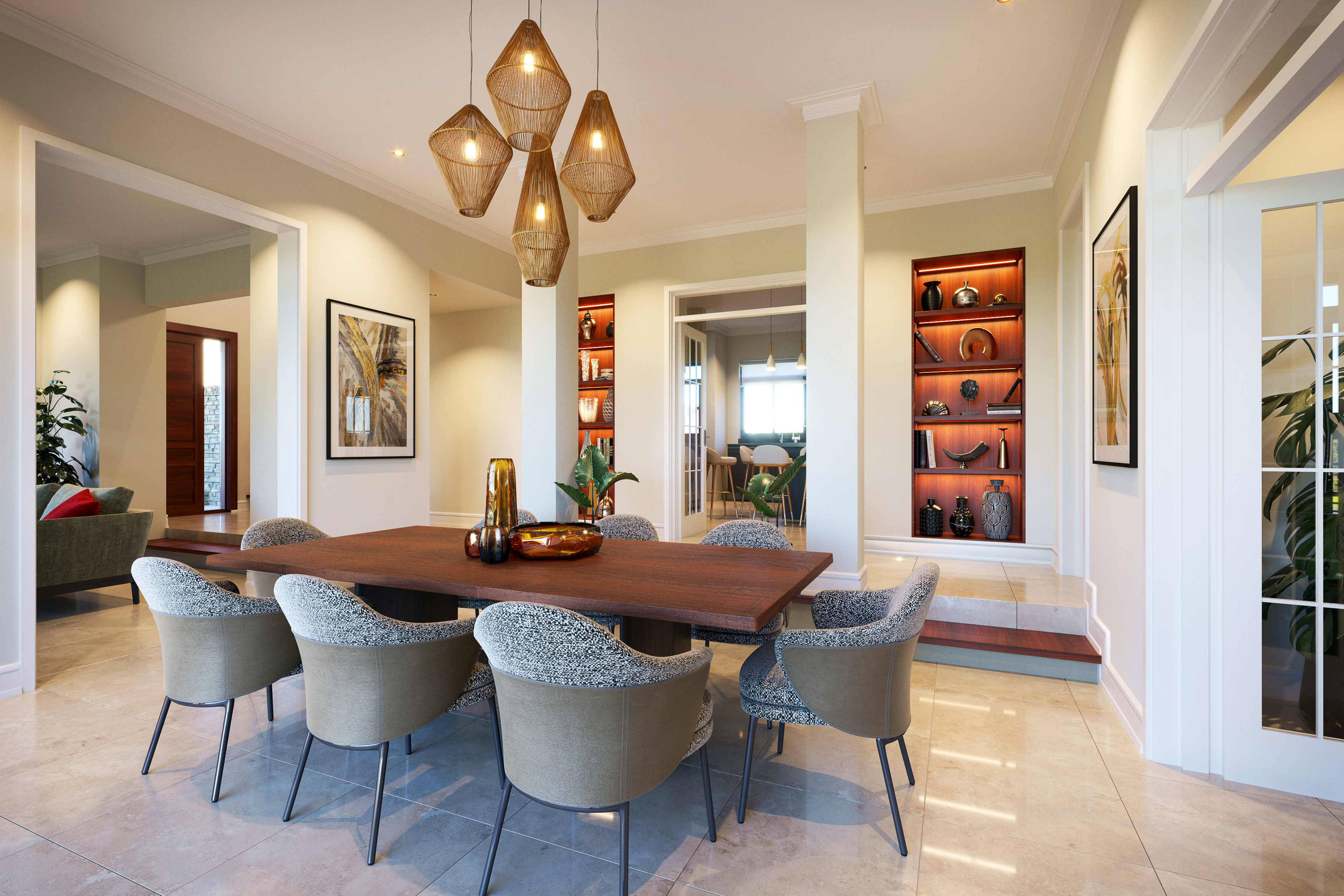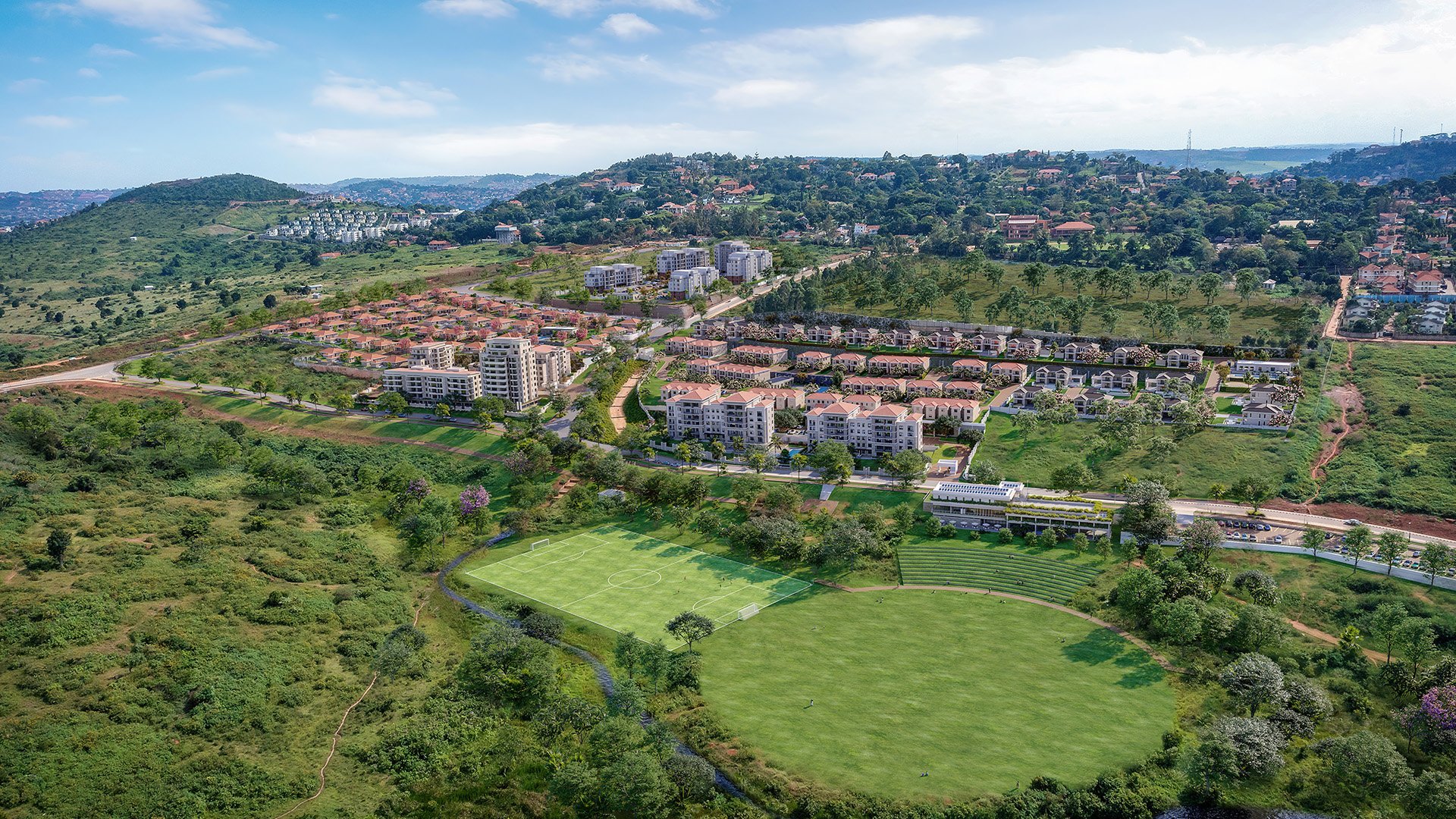Prime
Enjoy stylish living at Solana Residences

The decor is sleek and modern. Photo/Courtesy
What you need to know:
- They have achieved true sustainability by following different green building design principles, and as a result, they have been recognised as the first green district development in Uganda and the first green mark district neighbourhood development in Africa.
Designed to exceed the expectations of discerning homeowners, Solana offers opulent homes exuding modern elegance and access to modern amenities in one of the most exclusive areas in the city.
Solana, a distinguished residence developed by the National Social Security Fund Uganda, (NSSF) has something for everyone, from chic flats and charming bungalows to elegant townhouses.
Located in Lubowa, Wakiso District, a few miles from the Entebbe International Airport, 60 of the 600 acres of NSSF land are currently covered by phase one of the Solana housing project, which includes 306 homes, according to David Wanangwe, senior project manager for investment at NSSF.
The residences are located eight kilometers from Kampala, the country’s capital where NSSF plans to build additional offices, shopping centres, and other commercial spaces in close proximity with the residents.
NSSF paid about $71m (Shs263b), excluding consultation fees, for the Solana Homes which were handed over in June 2023.
The units at Solana can be purchased with mortgages that allow customers to pay 40 percent of the total cost of their home and the balance within a five-year window. The homeowner receives the title to the property upon completion of the payment.
The Fund’s flagship project aims at creating a modern style of living, with a total of six gated communities featuring various housing types.
The Savannah
The Savannah is one of the communities with 90 apartments. There is one with 51 bungalows, 20 villas (the Fund’s premium product), and a community of townhouses.
“NSSF is primarily seeing this as an investment whose intention is to sell to the general public where it will roll out a model called ‘rent to own’ to the general public,” said Wanangwe.
Here, one will have the advantage of beginning as a tenant and subsequently switching to ownership, however, the direct purchase process is the usual process.
Prices start at $215,000, (Shs797m) but they largely depend on the size of the occupied housing unit. The smallest unit is sized at 151 square kilometres.
Services
NSSF also intends to establish a body to which residents will pay a monthly levy for services such as cleaning, security, waste collection, and insurance, which will be professionally managed at first by NSSF.
Benefits
You do not not necessarily need to buy a property to live in Solana.
One example is an investor who buys a house and rents it out as an AirBnB because each bedroom has its own bathroom and a restroom.
“Savers of NSSF get to share in the return on investment that the fund as the developer makes annually. Every time we sell a house at a profit, it contributes a return in that financial year. And when we get the cash early, it allows us to reinvest the cash even at a better return on investment such that in the end they (NSSF savers) share the overall return on the Fund for each unit sold,” says Gerald Paul Kasaato, NSSF’s chief investment officer.

The Savannah is one of the communities with 90 apartments. You can move in first as a tenant and subsequently purchase your apartment. Photo/Courtesy.
Return on investment
Real estate experts estimate that good residential real estate developments give returns of between seven and eight percent, but there are a few that will go up to 10 percent if you compare costs to rent as an investor.
“Our internal rate of return in dollar terms of about 10 percent. This is actually not a bad investment. We reckoned that this project will probably be sold out in not more than four years from now,” Kasaato said.
“Even if you do not see 30 percent year-on-year returns in the real estate sector, you get a consistent positive return, which is good in the long run, especially if you are looking at it from a portfolio perspective,” he explains.
Background
The Uganda Bureau of Statistics (UBOS) reports that the rapid population growth (2.82pc) and urbanisation (25.55pc) in the country has shot up demand for housing.
The government of Uganda acknowledges in its Vision 2040 the crucial part housing plays in the socioeconomic transformation of the nation.
But the country still grapples a deficit of at least 2.1 million housing units growing at a rate of 200,000 units per year.
According to Habitat for Humanity, Uganda will have about 48 million people by the end of this year due to the country’s rapid population growth, pushing up the housing shortage to over three million.
The Solana project has achieved true sustainability by following different green building design principles, and as a result, they have been recognised as the first green district development in Uganda and the first green mark district neighbourhood development in Africa.
The project will provide world-class facilities for people to live, work, shop, stay, and play.
Developers of real estate predict that with 2,750 homes, including apartments, townhomes, bungalows, and villas, this will be the largest project in East Africa.
Additionally, it will include ancillary features like office space, retail space, a hospital, a school, recreation and commercial hubs, police and fire stations, places of worship, green buffer zones, and a string of four parks along the riverine system.
A wastewater treatment facility, a security and communication system and a road network are additional amenities and infrastructure.
Phases one and two, which began in December 2017 and consist of the initial 306 housing units and project infrastructure, are now available for purchase.
ROI
Real estate experts estimate that good residential real estate developments give returns of between seven and eight percent, but there are a few that will go up to 10 percent if you compare costs to rent as an investor.
Savers of NSSF get to share in the return on investment that the fund as the developer makes annually.Every time a house is sold at a profit, it contributes a return in that financial year.




